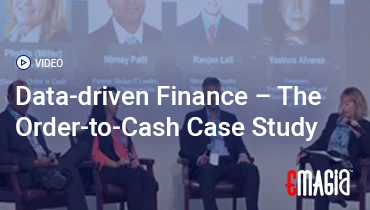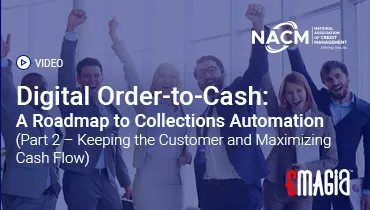The modern enterprise faces persistent challenges in managing the high volume of incoming payments. Any delay between a customer mailing a check and the funds being credited to the company’s account—known as em mail float em and em processing float em—can cripple cash flow and hamstring working capital efficiency. The solution, which has evolved dramatically from its analog roots, is a lockbox service. This essential treasury management tool, often provided by commercial banks, transforms accounts receivable (AR) processes by automating the collection, processing, and deposit of customer payments. By strategically outsourcing the physical and digital handling of remittance, businesses can drastically lower their Days Sales Outstanding (DSO), enhance fraud protection, and free up critical internal resources for strategic work. Understanding the sophisticated mechanics and strategic value of a bank lockbox is paramount for any organization committed to optimizing its Order-to-Cash cycle.
The Strategic Imperative: Why Businesses Rely on Lockbox Services for Accelerated Cash Flow
For chief financial officers (CFOs) and treasury managers, the quest for liquidity is ceaseless. Every hour shaved off the cash conversion cycle (CCC) represents a material gain in profitability and financial resilience. A traditional, in-house payment processing system is a bottleneck, vulnerable to internal manual errors, mail delivery inconsistencies, and the sheer time required for accounting teams to handle physical mail, open envelopes, separate checks from remittance advice, and physically transport deposits. The core strategic motivation behind adopting a lockbox service is simple: em immediacy em. By diverting payments directly to a secure, high-speed processing center, the time-lag between payment initiation and deposit availability is dramatically reduced, providing an almost immediate boost to working capital. This is not merely an administrative upgrade; it is a fundamental shift in how organizations manage their most precious asset: cash.
Defining the Lockbox Mechanism: How Payments Are Processed
A bank lockbox service operates through a simple but highly effective concept. Instead of directing payments to a company’s physical headquarters, customers send their checks to a dedicated post office box maintained by the servicing financial institution. This setup is entirely transparent to the customer. The financial institution or its designated processor manages the entire flow:
- Mail Collection: Bank personnel retrieve mail multiple times a day.
- Remittance Processing: Checks and any accompanying documents (em remittance advice em) are rapidly sorted, scanned, and processed.
- Deposit: Funds are immediately deposited into the company’s designated account.
- Data Transmission: Detailed payment data (images of checks, remittance info) is electronically transmitted to the company’s Accounts Receivable (AR) system for cash application.
This integrated, automated workflow effectively eliminates the manual intervention, physical transportation, and internal queuing that characterize self-managed payment processing, directly translating into lower operating costs and a significantly reduced float period.
The Historical Evolution of Payment Processing Solutions
The lockbox concept is deeply rooted in treasury management history, originating in the mid-20th century as a means for companies to overcome the geographic friction of payment collection. Initially, it was a purely physical service, designed to utilize the fastest local postal services near a company’s major customer bases. em The original lockbox strategy was a manual, logistical masterpiece. em Today, the service has evolved beyond checks. Modern lockboxes are hybrid systems, increasingly focused on processing digital payments and remittance data streams alongside paper checks. The emergence of Electronic Lockbox and Virtual Lockbox services represents the digital transformation of this core financial utility, where the emphasis shifts from physical handling to intelligent data capture and automated matching, positioning the service as a critical link in the digitized Order-to-Cash chain.
Comprehensive Benefits: Unlocking Financial Efficiency with a Bank Lockbox
Superior Speed: Drastically Reducing Days Sales Outstanding (DSO)
DSO is the benchmark of AR efficiency. Every action a company takes in payment processing should be measured against its impact on this metric. Lockbox services attack DSO from two angles. First, they eliminate em mail float em: the time the payment spends traveling to the company. By placing lockboxes strategically close to major postal hubs or customer clusters, mail time is minimized. Second, they eliminate em processing float em: the delay caused by internal administrative tasks. Banks operate highly efficient, specialized processing centers that can process hundreds of thousands of payments daily, depositing funds typically within hours of receipt, compared to the one-to-three days often required for in-house processing. This cumulative time saving directly and reliably decreases the company’s reported DSO, signaling greater financial health and efficiency to the market.
Mitigating Security and Fraud Risks in Payment Handling
Bringing physical checks and cash into a corporate office creates numerous points of failure and exposure to both internal and external fraud. Employees handling money, unsecured mail rooms, and delays in deposit all increase risk. A bank lockbox service significantly enhances security by transferring the fiduciary responsibility for check handling to a regulated financial institution. em Banks adhere to stringent federal compliance and security protocols, far exceeding the capabilities of most corporate accounting departments. em Furthermore, the process involves high-resolution scanning and digital archiving of all payment instruments, creating an unimpeachable audit trail that deters fraud and simplifies compliance reviews. It moves the handling of sensitive financial instruments away from non-specialized personnel and into a dedicated, secured environment.
Enhancing Operational Throughput and Back-Office Productivity
Consider the labor cost associated with opening mail, manually preparing bank deposit slips, reconciling checks against invoices, and physically traveling to a bank branch. By outsourcing this entire workflow to the lockbox provider, the company’s Accounts Receivable team is liberated from mundane, repetitive tasks. This is perhaps the greatest non-cash benefit. The AR team can pivot from being paper-shufflers to financial analysts, focusing their efforts on high-value, exception-based work like em dispute resolution, deduction management, and proactively chasing late payments em. This reallocation of human capital allows the enterprise to achieve higher throughput without increasing headcount, providing a substantial, quantifiable return on the lockbox service investment.
Deep Dive into Lockbox Types: Choosing the Right Solution for Your Enterprise
Not all lockbox services are created equal. Financial institutions have tailored specific models to address the varying needs of different business sectors based on transaction volume, payment value, and remittance complexity. The choice of the correct lockbox structure is critical for maximizing both speed and efficiency.
Wholesale Lockbox: Optimizing High-Value, Low-Volume Transactions
The Wholesale Lockbox is predominantly used by businesses with Business-to-Business (B2B) sales models. These payments are typically high in value but low in volume, and critically, the remittance advice is often highly complex. The checks may be accompanied by various documents detailing discounts taken, deductions, or partial payments relating to multiple invoices. em The emphasis here is not just on speed, but on accurate data capture and robust exception handling. em Wholesale lockbox services employ specialized personnel to manually interpret and enter complex remittance data, ensuring that the company’s AR ledger is updated correctly despite the intricate payment details. This service minimizes the risk of misapplication that could lead to billing disputes down the line.
Retail Lockbox: Managing High-Volume, Low-Value Consumer Payments
Conversely, the Retail Lockbox is engineered for companies like utilities, retailers, and subscription services that receive thousands of low-value, standardized payments from consumers. In this model, the volume is high, but the remittance data is simple, often consisting of a standardized coupon or stub. The process is heavily automated. Banks use high-speed optical character recognition (OCR) and image scanning equipment to process payments almost instantaneously. The objective is em pure volume processing and rapid deposit em. While less adaptable to complex remittance, the retail lockbox excels at minimizing the processing time for massive payment streams, often integrating directly with billing systems for straight-through processing.
Specialized Lockbox Services: The Emergence of Electronic and Distributed Models
The evolution of payments has necessitated newer, specialized lockbox models. A Distributed Lockbox Network involves setting up multiple physical lockboxes in strategically diverse geographic locations to minimize mail float across a vast national or international customer base. The rise of electronic payments has also given birth to the Electronic Lockbox or Virtual Lockbox, which is less about handling paper and more about standardizing and integrating electronic remittance data received via ACH, wire transfers, or customer portals. This service acts as a single integration point, converting disparate digital payment information into a unified data format for the company’s ERP, making the final cash application process fully automated, regardless of the payment’s origin.
Operational Mechanics: A Step-by-Step Guide to the Lockbox Workflow
To appreciate the value of a bank lockbox, one must understand the precision of the underlying operational workflow that distinguishes it from in-house processing. The entire cycle is a high-speed, controlled financial assembly line.
The Critical Role of Mail Collection and Pre-Sorting
The process begins before the mail is even opened. Bank staff or secured third-party vendors handle the daily retrieval of mail from the dedicated P.O. boxes. This retrieval is performed multiple times throughout the day, including evenings and weekends, which is a key advantage over standard corporate mailroom schedules. The mail is then pre-sorted using high-speed machinery. Checks are separated from remittance documents. em The commitment to multi-pass retrieval minimizes the time the check spends waiting, directly reducing the mail float. em This logistical rigor ensures that funds begin their journey toward deposit almost immediately upon arrival at the bank’s facility.
Data Capture, Scanning, and Digital Image Archiving
In the heart of the lockbox center, specialized image processing equipment scans the checks and any accompanying remittance advice. This process creates digital images of every document, which are then used for both processing and archiving. Modern systems use advanced technology like Intelligent Character Recognition (ICR) and Optical Character Recognition (OCR) to automatically read key fields: the check amount, the payer’s name, and, most importantly, the invoice number(s) from the remittance coupon. For complex wholesale payments, human operators, or em keying specialists em, review the digitized images to accurately interpret and key in data that the automation system flags as an exception. The resulting digital image archive serves as the official, auditable record of the transaction.
Funds Deposit and Real-Time Notification Protocols
The most critical step is the deposit. Once the checks are processed and validated, the bank generates an automated deposit file. The physical checks are processed through the banking system (often via remote deposit capture or direct image exchange), and the funds are credited to the company’s account. This happens incredibly fast—often within hours of receipt, a concept sometimes referred to as em same-day liquidity em. Concurrently, the lockbox service sends an electronic notification file to the company, typically an EDI 823 or BAI2 file, which contains the deposit amount, a deposit ticket number, and a summary of the processed payments. This near real-time notification allows treasury departments to update their cash position and forecast liquidity with far greater accuracy than is possible with manual processes.
Handling Exceptions, Returns, and Misdirected Payments
No payment stream is perfect. Lockbox services are specifically designed to manage the inevitable exceptions. This includes checks with missing signatures, amounts written incorrectly, or payment amounts that do not match the remittance advice. The lockbox provider documents the exception, attempts to resolve minor issues (like obtaining corrected documentation from the company), and isolates the payment. Similarly, misdirected payments (e.g., a payment intended for a subsidiary) are flagged and routed according to predefined company instructions. This formalized, high-speed exception handling minimizes the time that problem payments remain in limbo, preventing unnecessary collection calls or account holds. em A robust bank lockbox acts as the first line of defense against payment chaos. em
Selection and Implementation: Key Considerations for Partnership with a Financial Institution
Selecting a lockbox provider is a strategic, long-term decision that requires a thorough evaluation of the financial institution’s technical capabilities, geographic footprint, and service model.
Analyzing Pricing Structures and Fee Models
Lockbox pricing models can be complex. They typically involve a combination of fees: a fixed monthly maintenance fee, a per-item fee for each check processed, and additional charges for specialized services like advanced remittance data entry or secure web portal access. Companies must perform a detailed cost-benefit analysis, projecting the number of checks processed per month against the service provider’s fee schedule. em The primary financial calculation should weigh the lockbox fees against the tangible savings from reduced DSO, lower internal labor costs, and the mitigated risk of fraud. em It is crucial to negotiate a transparent contract that clarifies charges for exception processing and data transmission formats.
Evaluating Reporting Capabilities and Data Integration Options
The true value of a lockbox service today lies not just in the speed of the deposit but in the quality and timeliness of the remittance data. The provider must offer robust reporting that integrates seamlessly with the company’s Enterprise Resource Planning (ERP) or Accounts Receivable system (e.g., SAP, Oracle, NetSuite). Key reporting factors include: the ability to provide images of both the check and remittance document; compatibility with standard electronic data interchange (EDI) formats; and the capacity for API-based real-time data push, which is essential for modern, automated cash application. Poor data integration can negate the speed benefit, leaving the AR team to manually match the data, which defeats the automation purpose.
Geographic Strategy: The Importance of Regional Lockbox Placement
While electronic payments reduce the significance of geography, for companies still receiving significant volumes of paper checks, the lockbox location remains vital. The goal is to minimize em postal float em by placing the lockbox in a city near a major postal processing center that is geographically close to the majority of the payer base. em A multi-site lockbox strategy em may be necessary for companies with a nationwide footprint, ensuring no customer payment travels excessively far before reaching a secure processing point. This geographic optimization is a core pillar of reducing the overall DSO and accelerating funds availability.
Advanced Lockbox Technologies and the Future of Payment Processing
The future of treasury is digital, and the modern bank lockbox is a service offered by financial institutions that is rapidly evolving to stay ahead of payment trends. The emphasis is shifting from physical handling to intelligent data management.
The Integration of AI and Machine Learning in Remittance Matching
One of the most complex, time-consuming tasks in AR is matching payments to open invoices, especially in wholesale lockbox scenarios where remittance data is complex or vague. Artificial Intelligence (AI) and Machine Learning (ML) are transforming this challenge. AI algorithms are now integrated into lockbox systems to read unstructured remittance data (e.g., customer notes in emails or poor image quality) and automatically suggest the correct invoice match. em This intelligent remittance matching drastically increases the straight-through processing rate (STP) of cash application em, minimizing human intervention and ensuring the AR ledger is updated faster and with greater accuracy than traditional manual keying.
Virtual Lockbox and Electronic Remittance Processing (ERP)
The Virtual Lockbox transcends physical mail entirely. It provides a dedicated electronic routing number (akin to an e-mail address or a unique ACH identifier) for customers to send electronic payments and associated remittance data directly. The service acts as a powerful data normalization engine, taking various digital formats (including complex EDI files, simple emails, and bank portal data) and standardizing them into a single file format compatible with the company’s ERP. This eliminates the need for manual data reconciliation from multiple electronic sources, offering a truly touchless experience for cash application.
Beyond Paper Checks: Future-Proofing for Digital and Crypto Payments
As payment methods diversify, the lockbox must adapt. Providers are beginning to incorporate infrastructure that can handle non-traditional forms of payment. This includes specialized integration points for virtual credit cards (VCCs), which require specific data handling for Level 3 processing, and even early capabilities to document and trace payments made via blockchain or cryptocurrencies, as these enter the B2B landscape. em The strategic value of the lockbox is becoming its ability to consolidate and standardize all payment data, regardless of the instrument used. em
Overcoming Challenges: Managing Complexities in Lockbox Operations
While lockbox services offer immense benefits, they are not without complexity. Effective management requires strong collaboration with the financial institution and clear internal protocols.
Dispute Resolution and Deduction Management through Lockbox Data
Payments received via lockbox often include short-pays or deductions, where the customer remits less than the total invoice amount due to a dispute (e.g., damaged goods, pricing error). The lockbox system’s role is to ensure the remittance data captured is detailed enough to accurately categorize the deduction immediately. em The availability of the high-resolution image of the remittance advice serves as the critical starting point for the deduction research team em, allowing them to begin the resolution process without waiting for internal mail delivery, accelerating the time-to-resolution for revenue leakage issues.
Maintaining Compliance (e.g., PCI DSS) and Audit Trails
For organizations handling regulated data, particularly credit card payments managed through a virtual lockbox, compliance is non-negotiable. Outsourcing to a bank lockbox helps compartmentalize compliance risk, as the financial institution shoulders the responsibility for physical security and adherence to standards like PCI DSS. However, the company remains responsible for ensuring the data transfer protocols are secure. The digitized record created by the lockbox provider is also essential for audit readiness, providing financial auditors with a complete, traceable, and easily accessible record of every payment, from receipt to final application. em A clean, auditable trail is a non-negotiable goal of any treasury operation. em
Elevating Cash Flow Predictability with AI-Powered Cash Application
While the traditional bank lockbox is a service offered by financial institutions that excels at physical mail processing and funds deposit, it often stops short of fully automating the final, most complex step: the cash application. This is where modern AI-powered solutions integrate to maximize the return on the lockbox investment. The lockbox provides the raw data (the check image and remittance file); the intelligent automation platform takes this data and performs the deep cognitive matching necessary for touchless AR.
A platform like Emagia ingests the lockbox data file instantly via API or EDI integration. Using sophisticated machine learning algorithms, it processes the data, even if it is incomplete or unconventional, to achieve a near 100% match rate. This includes matching payments made across multiple bank accounts, dealing with complex partial payments, and automatically handling foreign currency transactions documented within the lockbox file. em This integration turns the fast deposit provided by the lockbox into an immediate, accurate update in the ERP system em, eliminating the manual effort that traditionally follows the bank’s data dump. By leveraging this combination, businesses move beyond simple speed and achieve true cash flow predictability and unparalleled operational efficiency in the Order-to-Cash cycle.
Frequently Asked Questions: Comprehensive Lockbox Q&A
Is a bank lockbox still necessary in the age of electronic payments?
Yes, absolutely. While electronic payments are rising, many B2B and consumer payments are still made by check, and a bank lockbox service remains the most secure and efficient way to handle this paper volume. Furthermore, modern lockboxes have evolved into “virtual lockboxes,” which process and standardize electronic remittance data (from ACH, wires, etc.) just as effectively as physical checks, acting as a crucial data hub for all incoming payments, digital or paper.
What is the difference between a wholesale and a retail lockbox?
The primary difference lies in the volume and complexity of the remittance. A wholesale lockbox is for high-value, low-volume B2B payments with complex remittance advice (often requiring manual data entry). A retail lockbox is for low-value, high-volume consumer payments with standardized, scannable remittance coupons, relying heavily on automated scanning (OCR) for speed.
How does a lockbox reduce Days Sales Outstanding (DSO)?
A lockbox reduces DSO by minimizing two key components of float: Mail Float (by having checks delivered directly to the bank’s secure, fast-processing P.O. box near a postal hub) and Processing Float (by having the bank process and deposit the funds instantly, often within hours, rather than waiting for internal mail handling and manual deposit preparation).
Does using a lockbox completely eliminate internal Accounts Receivable work?
No, but it eliminates the manual, transactional work related to payment handling. The AR team still needs to use the electronic data provided by the lockbox to perform cash application (matching the payment data to the correct open invoices in the ERP). However, modern AI tools integrate with the lockbox data to automate this final cash application step, making the entire process nearly touchless.
What data security protections does a bank lockbox provide against fraud?
Bank lockbox services provide superior security by: 1) removing physical checks and cash handling from the corporate office environment, reducing internal theft risk; 2) utilizing secured bank facilities and personnel for processing; and 3) creating an em impeccable, digitized, auditable record em of every payment instrument, which aids in forensic analysis and fraud deterrence.
Concluding Thoughts on Treasury Optimization and the Lockbox Advantage
The decision to implement a bank lockbox is a service offered by financial institutions that remains one of the most impactful operational choices a treasury or finance leader can make. It is a time-tested strategy that provides a tangible, immediate return on investment by accelerating cash flow and reinforcing security protocols. In the contemporary financial landscape, the service has transcended its paper-processing origins to become a critical data normalization hub, consolidating and standardizing payment information for both check and electronic remittances. By choosing the right lockbox type—wholesale, retail, or virtual—and by integrating its fast data streams with advanced cash application technology, businesses secure a significant competitive advantage. This strategic partnership with a financial institution is essential for any company striving for true treasury optimization, em ensuring that sales are converted into usable cash with maximum velocity and minimum risk. em



